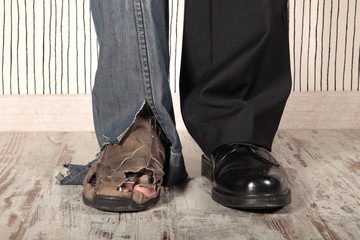How Devices Track You: Palisades Fire Case

Podcast: Play in new window | Download
Picture this: It’s New Year’s Eve. An Uber driver parks his car at a remote trailhead in L.A.’s Santa Monica Mountains. His phone pings a nearby cell tower. His Uber app logs his route, and he films a small fire he’s just started. Five months earlier, he asked an AI to create a dystopian image of a burning forest.
Fast forward to October 2025, and that driver, Jonathan Rinderknecht, is arrested for starting the Palisades Fire—one of Los Angeles’ worst wildfires, killing 12 people and causing $150 billion in damages. How did authorities catch him? His phone, his car, his apps—they all provided the metadata that tracked him down.
For preppers like us, this case is a wake-up call. The devices we carry every day—phones, cars, even fitness trackers—generate a digital trail that can pinpoint where you are, what you’re doing, and even what you’re thinking. This isn’t about being paranoid. It’s about understanding the everyday tools you rely on and how they can be used to track you.
Regardless of what you are preparing for, knowing how your data is collected and shared is critical. Today, I’ll break down the Rinderknecht case to show you exactly how your devices create a trackable footprint, the role of commercially sold data, and practical steps to minimize your exposure—without giving up your modern conveniences.
TL;DR: Your devices track your location, habits, and identity. Learn how that data is used—and how to protect your digital footprint.
Quick Look at What You’ll Learn
What Happened: The Palisades Fire and Rinderknecht’s Arrest
On January 1, 2025, a small fire—later called the Lachman Fire—was ignited near Skull Rock Trailhead in Pacific Palisades, California. It smoldered underground for a week before exploding into the Palisades Fire on January 7, fueled by high winds. The blaze scorched 23,000 acres, destroyed over 6,000 homes, and caused $150 billion in damages. Twelve lives were lost. Nine months later, on October 7, 2025, Jonathan Rinderknecht, from Florida, a 29-year-old former Uber driver, was arrested and charged with maliciously starting the fire. He faces five years in federal prison, with potential murder charges pending.
The investigation was led by the U.S. Department of Justice, ATF, and LAPD. It was a meticulous digital manhunt, piecing together data from Rinderknecht’s phone, car, and online activity. For us preppers, this case is a masterclass in how much information you’re unknowingly sharing—and how it can be used to build a profile of your life.
How Devices Track You: The Digital Trail
Let’s dive into the data points that nailed Rinderknecht and what they mean for you. Your devices are like spies, recording your every move, every search, every interaction. Here’s how they work and what they reveal about you.
Cell Phones: Your Personal Tracker
Your smartphone is a data goldmine. It’s not just a communication tool for doom scrolling when we’re bored. It’s a GPS transponder, a camera that provides visual evidence, and a log of your thoughts. In Rinderknecht’s case, his iPhone is the prosecution’s star witness.
Geolocation Data
Every time your phone connects to a cell tower or Wi-Fi network, it pings your location—often within 30–40 feet. Apps like Maps, Uber, or even weather apps log GPS coordinates in the background. For Rinderknecht, cell tower records and Uber app data placed him at the Skull Rock Trailhead at 11:15 p.m. on December 31, 2024, and again at the exact ignition spot just after midnight on January 1, 2025. No other phones were detected nearby, confirming he was alone. For preppers, this means your phone is always broadcasting your location, even if you’re in the middle of nowhere. Turning off location services helps, but it doesn’t stop cell tower pings or app tracking entirely. For that, you either need to not carry your phone with you or put it into a Faraday bag.
Media Files
Photos and videos carry EXIF metadata—hidden tags with time, location, and device info. Rinderknecht filmed the fire’s early moments, and those videos, stored on his phone, pinned him to the scene with timestamps. A separate video from his apartment showed a green lighter, later found in his car with his DNA on it. If you’re snapping photos of you area or anything you might be doing, that metadata could provide your coordinates and any images or videos of the area that you took while there.
App Usage and Logs
Apps log everything—your searches, chats, and even how long you linger on a screen. Rinderknecht’s Uber app showed his driving routes and passenger interactions, revealing he was in an agitated state before the fire. His ChatGPT queries, stored by OpenAI, included prompts for a “dystopian painting” of a burning forest and questions about fire liability. For us preparedness-minded people, this is a reminder that every app you use—from navigation to AI tools—keeps a record. Those records can be subpoenaed or hacked, exposing your plans, routines, and other personal information.
Cloud Backups
Most phones back up to iCloud or Google, storing texts, photos, and app data. Rinderknecht’s ChatGPT prompts and videos were retrieved from cloud storage. If you’re researching information or storing your survival plans in the cloud, they’re not as private as you think. A warrant or data breach (aka hack) could expose them and put them in the hands of people who would like to cause you harm.
Vehicles: Rolling Data Hubs
Modern vehicles are computers on wheels, and Rinderknecht’s Uber vehicle was no exception. Most cars built after 2015 have telematics—systems that track location, speed, and even driver behavior like braking patterns. His car’s GPS, likely tied to the Uber app, confirmed his drive to the trailhead. A 2023 Mozilla study found 84% of car brands sell or share this data with third parties, like insurers or data brokers. For preppers, this means your vehicle could be broadcasting your route to and from work, school, or the remote off-grid location that you’re working on. Even older cars can be tracked if you use a connected app or device, like a GPS tracker or OBD-II dongle.
Other Devices and Online Activity
Beyond phones and cars, other devices add to your digital footprint. Fitness trackers log your steps and location. Smart home devices like Alexa record conversations. Rinderknecht’s online activity—specifically his ChatGPT prompts and obsessive viewing of a fire-themed music video—showed a fixation on fire, helping prosecutors argue intent.
For preppers, this means your searches for “best survival gear” or “how to stockpile food on a budget” could flag you as someone who practices self-reliance, especially if those searches are tied to your identity through email or device IDs. That may not seem like a problem, right until the government decides to enforce its legal right to take your food supplies, should the Government determine it needs your food more than your family does.
Commercially Sold Data: The Hidden Market
Here’s where it gets sticky: the data your devices collect isn’t just sitting on your phone or car. As I mentioned earlier, it’s often being sold, without your knowledge, through a shadowy market of data brokers. This played a pivotal role in the Rinderknecht case and could affect preppers should the world ever turn against us.
What Is Commercially Sold Data?
Companies like Uber, Google, and even your phone carrier collect data—location, searches, app usage—and sell it to data brokers like Acxiom or Experian. These brokers create detailed profiles that link your phone’s ad ID, email, or device ID across platforms. They sell this to advertisers, insurers, or even law enforcement. A 2020 Vice investigation found police buying location data from brokers for as little as $6,000 a year, often without a warrant.
How It Was Used in the Case
While the Rinderknecht investigation relied heavily on subpoenas (e.g., for Uber’s GPS data and OpenAI’s ChatGPT logs), commercially sold data likely helped early on. If investigators didn’t initially have a suspect, they could have used a broker like Venntel to geofence the trailhead, identifying all phones present on January 1, 2025. This narrowed it to Rinderknecht. His Uber app data, carrier cell tower pings, and cloud-stored AI prompts and searches were then accessed via legal orders, but it was the commercial data market that made the initial sweep possible.
Why Preppers Should Care
It’s easy to shrug off the idea that someone is collecting your data—until that data gets used against you.
Weaponization of Information
That’s the real danger. Not the collection itself, but the weaponization of the information you leave behind. Right now, people walking around with phones in their pockets at protests—whether peaceful or not—are having their location, contacts, communications, and online activity quietly logged. That metadata gets swept up, analyzed, and stored.
We’ve seen it happen before. After January 6th, investigators used cellphone pings and GPS triangulation to identify and charge people who never entered the Capitol—some parked blocks away. The surveillance zones expanded until authorities had digital fingerprints on everyone in the vicinity. And once someone’s tagged, the net widens: the government can—and does—use FISA Court orders to surveil not just the person, but everyone they talk to, and everyone those people talk to.
Events
Now apply that to something as simple as attending an event considered undesirable by the government. You show up with your phone. You get caught in the digital dragnet. Now your name—and your entire contact network—are in a database tied to a politically sensitive event. If that gets linked to other data points, such as your online purchases, browsing habits, or social connections, it can be used to justify increased surveillance, profiling, or worse.
Visiting Friends
If you’re visiting friends, buying supplies, or browsing prepping sites, listening to a podcast, your phone’s location and usage history can be harvested and sold. Companies like Google and Facebook make billions doing exactly that. And when insurers get access to those profiles, your ‘risk’ goes up—so do your rates.
Insurance Companies
Insurance companies are already using commercial data to raise rates or deny coverage. If your metadata flags you as someone who frequents gun ranges, buys large amounts of food, visits government declared “high-risk” zones, or engages in political conversations online—your premiums can go up. Some have floated the idea of mandatory liability insurance for gun owners. So what happens when your metadata shows that you bought a firearm, visited a gun show, or attended a shooting course?
You become a line item on a risk profile. And that profile can cost you.
The Use of AI
AI makes this even more dangerous. When companies and governments combine massive databases with AI analysis, it becomes possible to flag entire communities based on nothing more than limited association and ideology. And if there’s ever a shift in policy—or leadership—that sees prepared citizens as a threat, that data gives them a map.
The UK is already arresting people for social media posts the government disagrees with. Think it can’t happen here?
It’s all fine—until it’s not.
Building a Profile: From Data to Narrative
The Rinderknecht case shows how data becomes a story. Investigators didn’t just track his location. They built a psychological profile. His ChatGPT prompts about burning forests, repeated music video views, and post-fire searches about cigarette liability painted a picture of obsession and intent. Geolocation tied him to the scene, and passenger reports of his agitation added context.
For preppers, this means your data isn’t just about where you are—it’s about who you are. Searches for “off-grid solar” or “bulk ammo” could label you as a survivalist. Your frequent trips to a prepper friend’s house can get you tagged. In a crisis, this profile could make you a target.
Analog Alternatives: Reducing Your Digital Signature
Digital hygiene is one layer—but analog tools offer another way to reduce exposure.
Practical Prepper Options:
- Carry paper maps in your bug-out bag and vehicle
- Keep cash on hand instead of relying solely on digital payments
- Go talk in person.
- Consider keeping your phone turned off and in a Faraday bag when not in use.
- Keep important contact info written down—or stored on an external drive rather than the cloud.
These low-tech tools are harder to trace and don’t rely on digital infrastructure that may fail—or will be exploited.
The Bottom Line About How Devices Track You
Stay Smart, Stay Prepared. Jonathan Rinderknecht’s arrest shows how a single night’s actions, captured by his phone and car, led to his downfall. For preppers, it’s a reminder that your devices are always watching—but you can take control. Disable unnecessary tracking, secure your data, and think twice about what you share online.
Preparation isn’t just about stockpiling food or gear. It’s also about listening to awesome podcasts like this. It’s about safeguarding your freedom to move and plan without leaving a trail. Stay smart, stay prepared, and keep your digital footprint as small as possible.
In a digital world that never forgets, your privacy is your preparedness.
Additional Resources
Read the full article here









